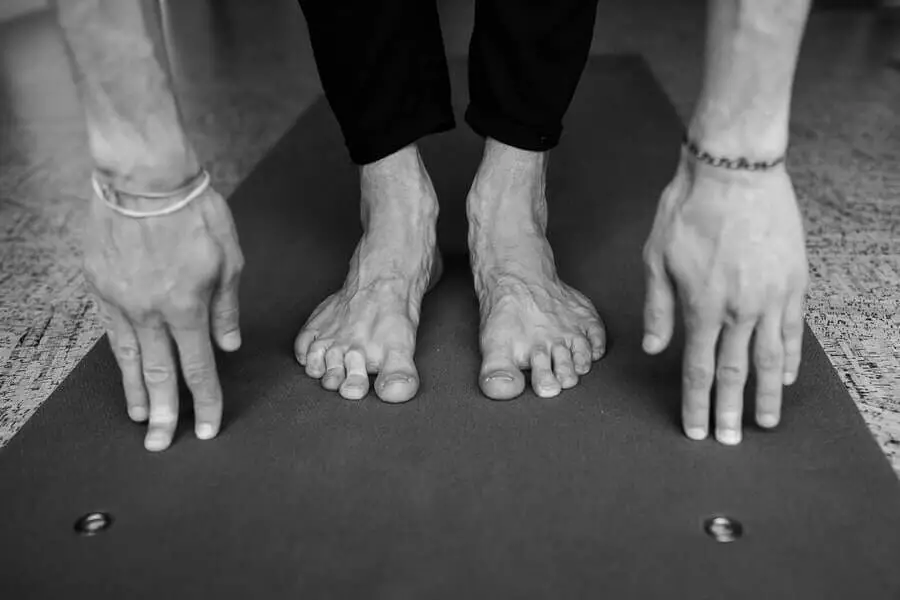Have you ever stopped to wonder why some people have blue veins and others have green veins? It’s a pretty interesting question, and the answer is actually quite complicated.
In this blog post, we’ll explore the science behind vein coloration, and we’ll also take a look at some of the factors that can affect it.
Blue veins are usually thinner and located closer to the surface of the skin. Green veins are thicker and located deeper in the skin.
While blue veins are typically found in lighter skin tones, they can be seen in people of all skin colors.
Green veins are usually only visible in people with darker skin tones.
In darker skin tones, green blood vessels typically look bluish-green when they’re close to the surface of the skin. The amount of oxygen in a person’s blood affects its color. When you have more oxygen, your blood is a brighter red and looks closer to orange, yellow or pink.

Veins stand out more against darker skin tones because they absorb and reflect back most of the light that strikes them. They don’t absorb as much of the light that strikes them, so they don’t look as bright or clear.
People with lighter skin tones have veins that aren’t completely hidden by their skin’s pigment, but it’s still just a little bit darker than their actual skin tone. As a result, the vessels look slightly blue when you can see them.
When you see blue veins, it’s usually because there’s something about their location or shape that makes them look bluer than usual.
You might notice a vein in one of your arms that seems to be darker and more prominent than the vein in your other arm. This is simply because it’s closer to the surface of your skin. It’s not a cause for concern.
Are green veins healthy?
Veins that look blue or green are usually completely healthy. However, there are some conditions that can cause them to appear darker than usual.
One example is varicose veins, which occur when your veins lose their elasticity and become wider and bumpier than normal. These swollen veins usually appear bluish-green.
Another condition that can cause vein color changes is called phlebitis, which is an inflammation of the veins.
When you have this condition, your veins may look green or blue-green for some time.
Are green veins good?
As long as they’re healthy, green veins are typically nothing to worry about. Veins can change color for many reasons, and you should consult a doctor if they don’t go back to their regular shade after several weeks.
If your veins stay green, it’s likely that this is simply because your skin color makes them more noticeable. This doesn’t mean that anything is wrong with them.
However, if you notice any symptoms associated with varicose veins or phlebitis, you should make an appointment with a doctor as soon as possible.
What does it mean if your veins look green?
People with bluish-green veins that contrast with their skin color may simply have darker skin tones. In some cases, these vessels can be seen through the thin layer of pigment covering them.
However, there are other conditions that can cause your veins to appear darker. For example, varicose veins are more common in pregnant women and people who have just given birth.
They’re also more likely to develop these bulging veins when they spend a lot of time standing or sitting down.
What does a blue vein mean?
Blue veins are common in lighter skin tones because the light penetrates the thin layer of pigment covering them. As a result, they appear slightly blue when you can see them.
If you have light skin, you may be able to see blue veins in some areas of your body. For example, you might notice them on your stomach and chest when you’re standing up and looking at yourself in a mirror.
You can also see blue veins on the insides of your wrists and ankles. People with dark skin typically have greenish-blue veins that aren’t as visible.
Can veins get darker?
Yes, veins can darken for many reasons. For example, people often notice that their veins are darker after they’ve been sitting or standing up for a long time because this positioning makes them more prominent.
People with bluish skin tones may notice their veins appear darker when they’re standing up because there’s less contrast between the vessels and their surrounding skin.
However, there are certain conditions that can cause veins to appear bluer or darker than usual.
Final Thoughts
You may notice that some of your veins seem to be more prominent than others. This is usually because they’re closer to the surface of your skin, which makes them easier to see.
Certain factors can make your veins appear bluer or greener than usual, however, this isn’t a cause for concern in most cases. Green-blue veins that show through lighter skin tones are usually nothing to worry about.
Blue veins are normal and healthy as long as they’re not accompanied by other symptoms. Since the appearance of veins can change for many reasons, you should consult a doctor if you notice any unusual symptoms.

